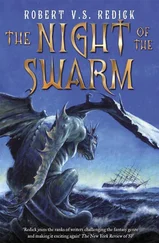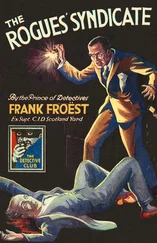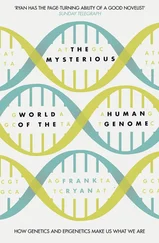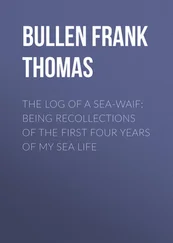Bunker C, the most commonly used ship fuel, contains ash, heavy metals and sediment that are separated off before use. The by-product is a thick sludge that many skippers prefer to dump illicitly rather than dispose of responsibly.
The effects of the planned commercial extraction of manganese nodules were simulated by German scientists 4000 metres below sea level off the coast of Peru. The research vessel dragged a harrow over the seabed, ploughing an area of eleven square kilometres. Numerous organisms died as a result. Years after the study, the region has failed to recover.
Florida Keys: in the course of a construction project, soil was flushed into the sea and settled on the reef, stifling a high percentage of the coral.
According to oceanographers, rising levels of carbon dioxide in the atmosphere caused by the burning of fossil fuels are adversely affecting the growth of coral reefs. When C0 2dissolves, it lowers the pH of the water. Nonetheless, leading energy corporations intend to go ahead with their plans to pump large quantities of C0 2into the ocean in an effort to prevent the gas entering the atmosphere.
Chateau Whistler, Canada
The message left Kiel at a speed of 300,000 kilometres per second.
The sequence of words keyed into Erwin Suess's laptop at the Geomar Centre entered the net in digital form. Converted by laser diodes into optical pulses, the information raced along with a wavelength of 1.5 thousandths of a millimetre, shooting down a transparent fibreoptic cable with millions of phone conversations and packets of data. The fibres bundled the stream of light until it was no thicker than two hairs, while total internal reflection stopped it escaping. Whizzing towards the coast, the waves surged along the overland cable, speeding through amplifiers every fifty kilometres until the fibres vanished into the sea, protected by copper casing and thick rubber tubing, and strengthened by powerful wires.
The underwater cable was as thick as a muscular forearm. It stretched out across the shelf, buried in the seabed to protect it from anchors and fishing-boats. TAT 14, as it was officially known, was a transatlantic cable linking Europe to the States. Its capacity was higher than that of almost any other cable in the world. There were dozens of such cables in the North Atlantic alone. Hundreds of thousands of kilometres of optical fibre extended across the planet, making up the backbone of the information age. Three-quarters of their capacity was devoted to the World Wide Web. Project Oxygen linked 175 countries in a kind of global super Internet. Another system bundled eight optical fibres to give a transmission capacity of 3.2 terabits per second, the equivalent of 48 million simultaneous phone conversations. The delicate glass fibres on the ocean bed had long since supplanted satellite technology. The globe was wrapped in a web of light-transporting wires, through which the bits and bytes of virtual society travelled in real time – telephone calls, video images, music, emails. The global village was made of cable, not of satellites.
Erwin Suess's email left Scandinavia and sped towards Britain on its way north. As it rounded the tip of Scotland, TAT 14 curved to the left. Once it passed the Hehridean shelf, the cable snaked its w ay over the seabed, resting on the ocean floor.
At least, it would have done, if the shelf and the seabed hadn't been destroyed.
Barely eight milliseconds after the message had left Kiel, it crossed the ocean south of the Faroes, where the cable ended abruptly in gigatonnes of mud and rock. Its durable casing with its reinforced wire and flexible plastic jacket had been severed in two, shattering the glass fibres, so the message of light waves was sent to the mud. The avalanche had hit the cable with such force that the torn ends lay hundreds of kilometres apart. TAT 14 only resumed its course in the Icelandic Basin, crossing back on to the shelf south of Newfoundland and running parallel to the coast until it reached Boston, where the useless length of high-tech cable connected to the overland line. Winding over the Rocky Mountains, the data highway travelled north past Vancouver along the west coast of Canada, where the optical cable was hooked up to a conventional copper cable in the substation of the prestigious luxury hotel, Chateau Whistler, at the foot of Blackcomb Mountain. A photodiode then reversed the original process, converting the optical pulses back into digital data.
Under normal circumstances the message from Kiel would have passed through the photodiode and appeared as an email on Gerhard Bohrmann's laptop. But the situation wasn't normal, and Bohrmann, along with millions of others, had lost his connection. One week after the disaster in northern Europe, transatlantic Internet traffic was at a standstill, and phone calls could only be made via satellite, if at all.
Bohrmann was sitting in the hotel lobby, staring at the screen. He knew Suess had been planning to email him a file. It contained growth curves for the worm colonies and estimates of what would happen in the event of similar invasions in other parts of the world. After the initial shock, the scientists in Kiel had jumped into action, and were working flat-out on the data.
He swore. The small world was large again, full of unbridgeable space. They'd been told that morning that a satellite connection for email would be up and running by the end of the day, but there was still no sign of it working. For the time being, they were tied to the severed cable. Bohrmann knew that crisis teams around the world were feverishly trying to build autonomous networks, but the Internet kept collapsing. The real problem, he suspected, wasn't one of know-how but capacity. The military satellites were working fine, but even the Americans had never considered the possibility that the transatlantic fibreoptic bridge might one day need rerouting via space.
He reached for the mobile that had been supplied to him by the emergency committee, and dialled a satellite connection through to Kiel. He waited. After a few attempts he was connected with the Geomar Centre and put through to Suess. 'No luck,' he said.
'Well, it was worth a shot.' Suess's voice was perfectly clear, but there was a lag in response time that Bohrmann found offputting. He couldn't get used to satellite calls. The signal had to travel 36,000 kilometres from the caller to the satellite, then the same distance back to the receiver. Conversations were full of pauses and overlaps. 'Nothing's working here either,' said Suess. 'In fact, it's getting worse. We can't get through to Norway, we haven't heard a peep out of Scotland, and Denmark is just a place on the map. You can forget about emergency measures – nothing's been done.'
'We're on the phone now, aren't we?' said Bohrmann.
'Only because the Americans want us to be. You're enjoying the military privileges of a superpower. It's hopeless in Europe. There isn't a single person who doesn't want to make a call. Everyone's terrified because they don't know what's happened to their family and friends. We've got a data jam. The few available networks have been snapped up by government teams and crisis squads.'
'So what do we do?' Bohrmann asked helplessly.
'No idea. Maybe the QE2's still sailing. You could always send a rider on horseback to wait for the boat. You'd have the information in – now, let me see – six weeks or so?'
Bohrmann gave a pained laugh. 'Seriously,' he said.
'In that case, we've got no choice. Get ready to write.'
'Fire away,' sighed Bohrmann.
While he noted what Suess dictated to him, a group of men in uniform crossed the lobby behind him and headed for the elevators. At their head was a tall man with Ethiopian features. According to his insignia, he was a general in the US military. He wore a name-badge – PEAK.
Читать дальше












